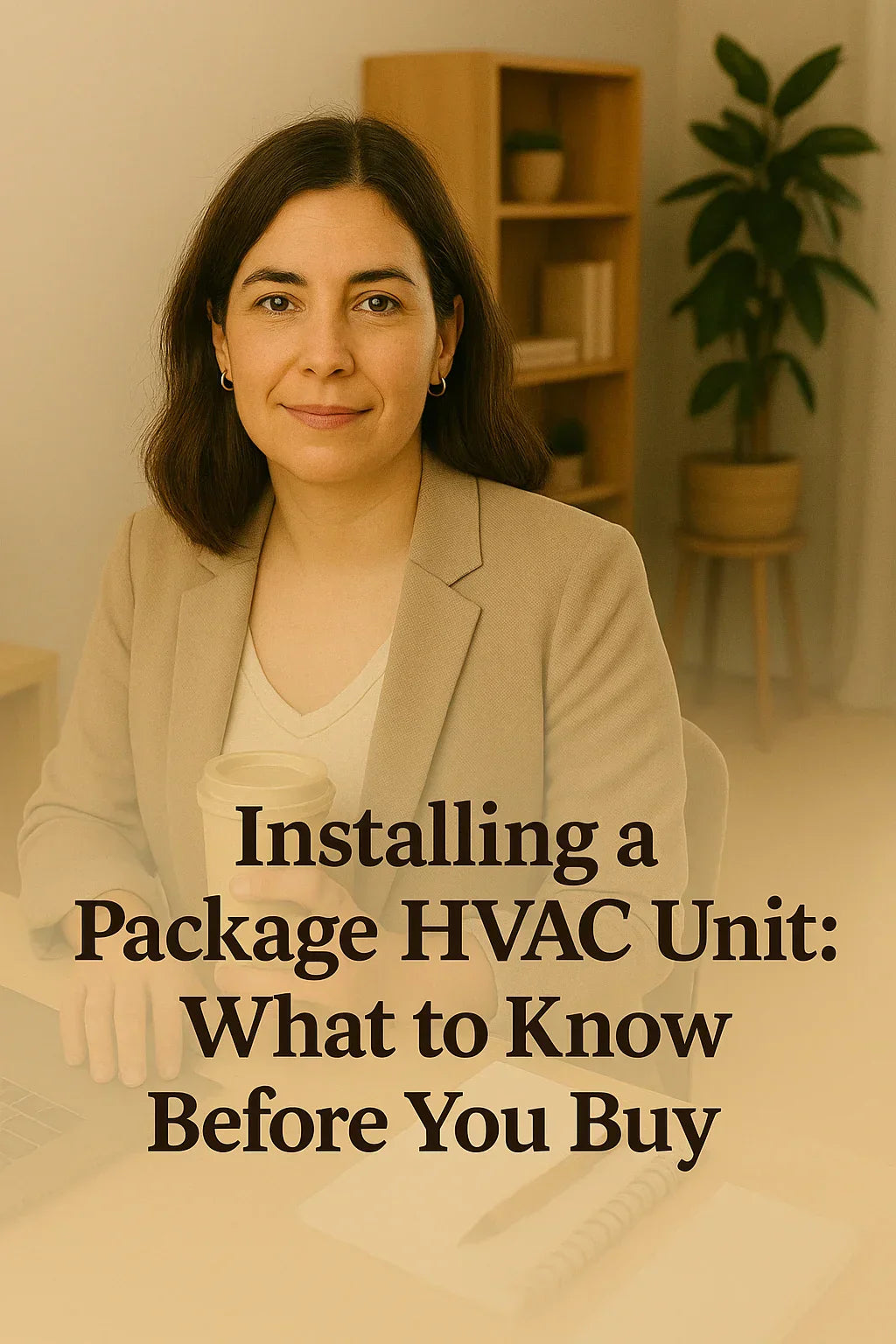🏠 What Is a Package HVAC Unit?
A package HVAC unit houses all heating and cooling components in a single outdoor cabinet, connecting to your home's duct system for year-round comfort.
📋 Pre-Installation Checklist
Before purchasing, homeowners should:
-
✅ Confirm roof or ground installation suitability.
-
✅ Check ductwork condition.
-
✅ Assess electrical capacity.
-
✅ Confirm clearances and pad/roof support.
-
✅ Understand local code requirements and permits.
Energy.gov provides an HVAC overview to prepare for system installations.
🛠️ Ground vs. Rooftop Installation
🪨 Ground Installations:
-
Requires a level concrete or composite pad.
-
Easier access for maintenance.
-
Must account for drainage and flood risk.
🏗️ Rooftop Installations:
-
Frees up yard space.
-
Requires crane for installation and service.
-
Needs structural evaluation of roof.
-
Easier condensate drainage via roof lines.
Carrier details package unit installation types for planning.
🔌 Electrical and Ductwork Considerations
Electrical:
-
Ensure your panel can handle the amperage required.
-
May need dedicated circuits.
Ductwork:
-
Inspect for leaks and damage.
-
Verify sizing to match new unit capacity.
-
Old ductwork may require replacement, adding $1,500 – $3,500.
🛑 Permits and Code Requirements
-
Most localities require permits for HVAC installs.
-
Inspection may be needed post-installation.
-
Ensure compliance with electrical, structural, and mechanical codes.
Check your city or county building department for details before purchasing your package unit.
🛠️ The Installation Process Step-by-Step
1️⃣ Site Preparation:
-
Pad installation or roof evaluation.
-
Clear debris and obstructions.
2️⃣ Delivery and Placement:
-
Crane for roof installs.
-
Place unit on pad or supports.
3️⃣ Ductwork Connection:
-
Secure connections to supply and return.
-
Seal with mastic or approved tape.
4️⃣ Electrical Hook-Up:
-
Connect power and thermostat wiring.
-
Test voltage and safety disconnects.
5️⃣ Startup and Testing:
-
Charge refrigerant (if required).
-
Test heating and cooling modes.
-
Check airflow and system pressures.
Trane provides details on package vs. split installations to help homeowners prepare.
💰 Installation Costs to Expect
-
Ground Install: $2,000 – $4,000
-
Roof Install: $3,000 – $5,000
-
Crane Rental: $300 – $800 if needed
-
Ductwork Replacement: $1,500 – $3,500
-
Electrical Upgrades: $500 – $2,500
Expect total install costs to range from $2,500 to $7,500 depending on complexity.
🧰 DIY vs. Professional Installation
DIY Installation:
-
Typically not recommended.
-
Risks include voided warranties, code violations, and safety hazards.
Professional Installation:
-
Ensures correct sizing, connections, and code compliance.
-
Provides warranty protection on labor and equipment.
-
Faster and safer installation.
Energy Star strongly recommends professional HVAC installation for efficiency and safety.
🪙 Rebates and Incentives
Energy Star-rated package units may qualify for:
-
Federal tax credits (up to 30%).
-
State and local utility rebates.
Search your area’s programs at DSIREUSA.org.
🏁 Final Tips Before Buying Your Package Unit
✅ Confirm load calculation to size your unit correctly. ✅ Check local permitting and inspection requirements. ✅ Evaluate roof structure for rooftop installations. ✅ Get written installation quotes. ✅ Ask about warranties on labor and equipment.
For homeowners seeking a space-saving, all-in-one system, package HVAC units can be a practical solution if installation details are planned thoroughly.
In the next article we will know more about: Maintaining Your Package HVAC System: DIY & Professional Tips







